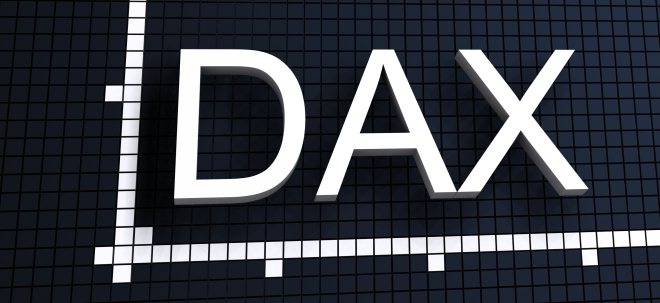Only Half of U.S. Workers Are Aware of a Tax Credit for Retirement Savers
Transamerica Center for Retirement Studies Offers Tips on How to Claim the Saver's Credit
LOS ANGELES, Feb. 12, 2025 /PRNewswire/ -- Fifty-one percent of U.S. workers are aware of a tax credit that may help them save for retirement and lower their tax bill, according to new survey findings from nonprofit Transamerica Center for Retirement Studies® (TCRS). The Saver's Credit, also referred to as the Retirement Savings Contributions Credit by the Internal Revenue Service (IRS), is available to millions of taxpayers who are saving for retirement.
"The Saver's Credit is a tax credit that may reduce a person's federal tax bill. It complements the other tax-advantages of saving for retirement in a 401(k), 403(b), or IRA," said Catherine Collinson, CEO and president of Transamerica Institute® and TCRS. "Many low- to moderate-income retirement savers may be missing out on the Saver's Credit simply because they don't know about it."
What Is the Saver's Credit?
The Saver's Credit is a non-refundable tax credit that may be applied up to the first $2,000 of voluntary contributions an eligible taxpayer makes to a 401(k), 403(b), or similar employer-sponsored retirement plan, a traditional or Roth IRA, or an ABLE (Achieving a Better Life Experience) account. In this context, "non-refundable" means the credit cannot exceed a person's federal income tax for the year. The maximum credit is $1,000 for single filers or individuals and $2,000 for married couples filing jointly. According to TCRS' analysis of the most recently published IRS data, the average amount of the Saver's Credit in 2022 was $194.
Who Can Claim the Saver's Credit?
The credit is available to individuals ages 18 years or older who have contributed to a 401(k), 403(b) or similar employer-sponsored retirement plan, a traditional or Roth IRA, or an ABLE account in the past year and meet the Adjusted Gross Income (AGI) requirements:
- Single tax filers: maximum AGI of $38,250 in 2024 and $39,500 in 2025;
- Heads of households: maximum AGI of $57,375 in 2024 and $59,250 in 2025; and,
- Married filing jointly: a maximum AGI of $76,500 in 2024 and $79,000 in 2025.
Additionally, the tax filer cannot be a full-time student and cannot be claimed as a dependent on another person's tax return. For more details about eligibility, refer to TCRS' fact sheet.
Tips for Claiming the Saver's Credit
- Consider using the IRS' online tool to help determine if you are eligible for the credit.
- If you use an online tax preparation tool to prepare your tax return, including those offered through the IRS Free File program, be sure to answer questions about the Saver's Credit, also referred to by the IRS as the "Retirement Savings Contributions Credit," and "Credit for Qualified Retirement Savings Contributions." Be sure to comparison shop among vendors included in the IRS Free File program and commercially available tax preparation software. Many charge a fee for claiming the Saver's Credit.
- If you prepare your tax return manually, complete Form 8880, Credit for Qualified Retirement Savings Contributions, to determine your exact credit rate and amount. Then, transfer the amount to line 4 on Schedule 3, which is used with Forms 1040, 1040-SR, and 1040-NR.
- If you use a professional tax preparer, be sure to ask about the Saver's Credit.
- If you get a refund, consider directly depositing it into an IRA to boost your retirement savings.
Another overlooked opportunity is the IRS Free File program. Many people eligible to claim the Saver's Credit may also benefit from this program. It offers tax filers with an AGI of $84,000 or less free online tax preparation tools to prepare their federal taxes. This year, eight products in English and one in Spanish are available at www.irs.gov/FreeFile. Certain restrictions may apply including a fee for claiming the Saver's Credit.
"The Saver's Credit is a well-kept secret. Please spread the word about it by telling family, friends, and colleagues. It could help eligible savers improve their long-term savings and inspire non-savers to start saving for retirement," said Collinson. "Saving habitually over time is essential for achieving long-term financial security. Every dollar counts."
For those who did not save for retirement in 2024, it's not too late. You have until April 15, 2025 to make an IRA contribution for the 2024 tax year.
To learn more about the Saver's Credit, additional information and resources, including fact sheets in English and Spanish, infographics, and a podcast episode, are posted and encouraged for public use at www.transamericainstitute.org/saverscredit. More information can also be found at www.irs.gov.
Important note: Beginning in 2027, the recently enacted SECURE Act 2.0 of 2022 replaces the Saver's Credit with the Saver's Match, a matching contribution from the federal government for retirement savers meeting income and other eligibility requirements. The Saver's Match will be 50% of a worker's retirement plan or IRA contributions up to $2,000, representing a maximum match of $1,000.
A Saver's Credit guide and other research and resources can be found at www.transamericainstitute.org. Listen to Transamerica Institute's podcast ClearPath – Your Roadmap for LifeSM. Follow on LinkedIn, Facebook, and X @TI_insights and @TCRStudies.
About Transamerica Center for Retirement Studies
Transamerica Center for Retirement Studies® (TCRS) is a division of Transamerica Institute®, a nonprofit, private operating foundation. TCRS is dedicated to educating the public on trends, issues, and opportunities related to saving and planning for retirement and achieving financial security in retirement. It conducts one of the largest and longest-running annual retirement surveys of its kind. TCRS and its representatives cannot give insurance, securities, ERISA, tax, investment, legal, medical, or financial advice or guidance. The information provided here is for educational purposes only and should not be construed as any advice or guidance. For more information about TCRS, please refer to www.transamericainstitute.org.
About the 25th Annual Transamerica Retirement Survey
This online survey was conducted within the U.S. by The Harris Poll on behalf of Transamerica Institute and TCRS between September 11 and October 17, 2024, among a nationally representative sample of 10,009 adults and an oversample of 2,008 workers in a for-profit company employing one or more employees. The data in this press release is shown for a subsample of 5,493 workers in a for-profit company employing one or more employees. Data was weighted where necessary for age by gender, race/ethnicity, region, education, marital status, household size, household income, and smoking status. Respondents were selected from among those who have agreed to participate in our surveys. The sampling precision of Harris online polls is measured by using a Bayesian credible interval and the worker sample data is accurate to within +1.7 percentage points using a 95% confidence level. This credible interval will be wider among subsets of the surveyed population of interest. Percentages are rounded to the nearest whole percent.
Media Contact: Kyle Moschen
kmoschen@webershandwick.com
![]() View original content to download multimedia:https://www.prnewswire.com/news-releases/only-half-of-us-workers-are-aware-of-a-tax-credit-for-retirement-savers-302374254.html
View original content to download multimedia:https://www.prnewswire.com/news-releases/only-half-of-us-workers-are-aware-of-a-tax-credit-for-retirement-savers-302374254.html
SOURCE Transamerica Center for Retirement Studies


